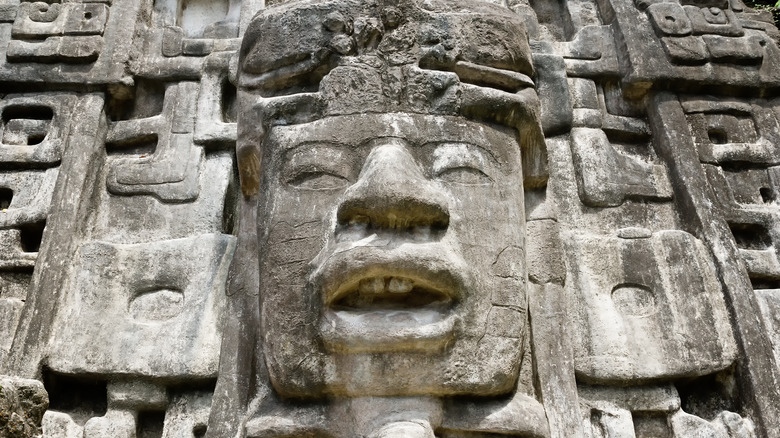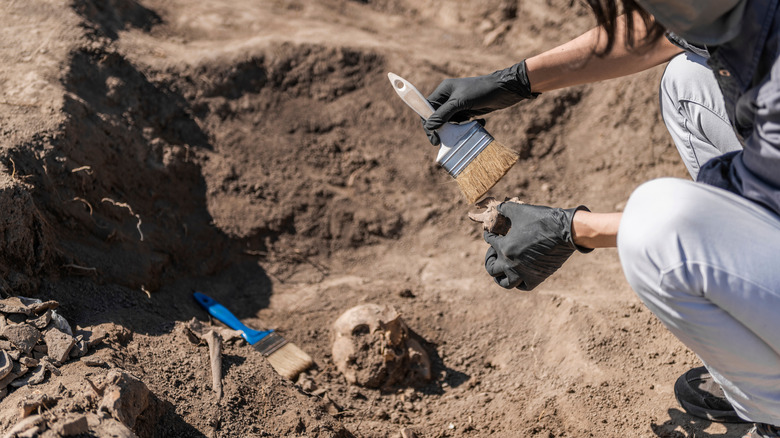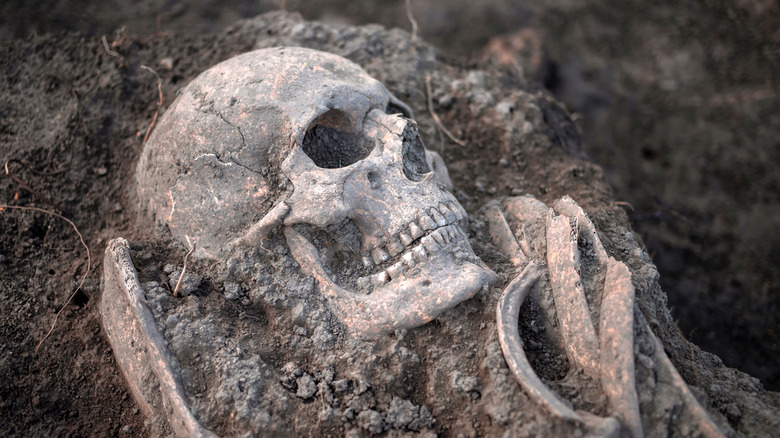Belize's Midnight Terror Cave Victims Held A Bizarre Detail In Their Teeth
No, the Midnight Terror Cave isn't a local haunted house attraction where a farmer chases you with a chainsaw with the saw chain removed. It's actually something quite a bit more terrifying -– it's a cave in Belize that was used for human sacrifice and is now filled with the bones of countless victims. It was discovered in 2006 by a looter who was making his way through the countryside when he slipped and fell around 60 feet down the side of a cliff. He miraculously survived, and his rescue led to the discovery of the disturbing site that turned out to be incredibly important to our understanding of Mayan history and customs.
James Brady, a professor of anthropology at California State University at Los Angeles, told the Washington Post, "what we found was a huge collection of human skeleton material, around 9,000 bones. It's probably the largest collection that has ever been found in a Mayan cave." Brady had been studying Mayan caves since the early 1980s, a time when it was widely believed that the caves were used merely as living spaces. However, he thought that many of these caves had a deeper, more religious significance to them, and postulated that they were most likely used for such rituals as human sacrifice. It seems that the Midnight Terror Cave may have proved Brady correct.
The odd item in the victims' mouths
According to Live Science, though skeletal bones were abundant in the cave, archeologists zeroed in on the teeth found at the site, believing that the calcified plaque on the various incisors, molars, canines, and bicuspids would reveal more about the final fates of the dead. Included in their findings were blue fibers that were stuck in the teeth of two people found in the cave, as noted by the study's lead author Amy Chan, who began her research into the Midnight Terror Cave's remains when she was a graduate student at Cal State LA. She stated, "After finding minimal instances of dental pathology, I became interested in determining what foodstuffs the victims were consuming."
Examining the calcified plaque — or the dental calculus — of human teeth for clues may seem odd to laymen, but the tiny preserved pieces of what a person ate before their final moments can actually reveal quite a bit. Live Science states that Amy Chan shaved some matter from the teeth and sent it to fellow researcher Linda Scott Cummings, president and CEO of the PaleoResearch Institute in Golden, Colorado, who discovered various cotton fibers that were dyed blue. Chan told Live Science that "the discovery of blue cotton fibers in both samples was a surprise –- blue is important in Maya ritual." This type of "Maya blue" color was common in ceremonies as it was used to paint the bodies of human sacrifices.
Another interpretation of the bizarre clues
The blue pigment found in body paint doesn't sound too odd, nor does the fact that, as stated in Live Science, the pigment has also been discovered in the remains of agave-based alcohol in the burial site at Teotihuacan. However, Amy Chan and her colleagues have put forth a darker reason for why the "Mayan blue" pigment appeared in the mouths of at least two victims in the Midnight Terror Cave: Chan believes it comes from the cotton cloths tied around their mouths that were used to gag victims prior to being sacrificed.
If this is the case, it could shed a lot of light on how to interpret the substances found on the skeletons' teeth. Gabriel Wrobel, a bioarchaeologist at Michigan State University, tells Live Science that "it is interesting that they found colored fiber in dental calculus," referring to the research into the remains from the Midnight Terror Cave. "Many researchers think that calculus only reflects diet, but this study is a great example of how much more information can be learned." While Chan and her fellow researchers acknowledge the limitations of examining the dental calculus of human remains, their work still establishes the importance of, when it comes to exploring the past, leaving no tooth unturned.


